If walking on the grounds of the Ashland University campus, one can sometimes hear the melodious clashing of metal. The source of the cacophony is Auriculum, 1973 a kinetic metal sculpture by late Cleveland sculptor John Clague.

Despite almost fifty years outside, the sculpture is in excellent condition; however, some areas of corrosion have developed and debris collected inside of the sculpture. For this reason, a conservation treatment of the kinetic metal sculpture located just outside of the Ashland University Library was needed. Jim Gwinner, Conservator of Sculpture and Public Art, and Christina L. Simms, Conservator of Objects and Sculpture, of McKay Lodge Conservation Laboratory traveled to Mid-Ohio to treat the sculpture.
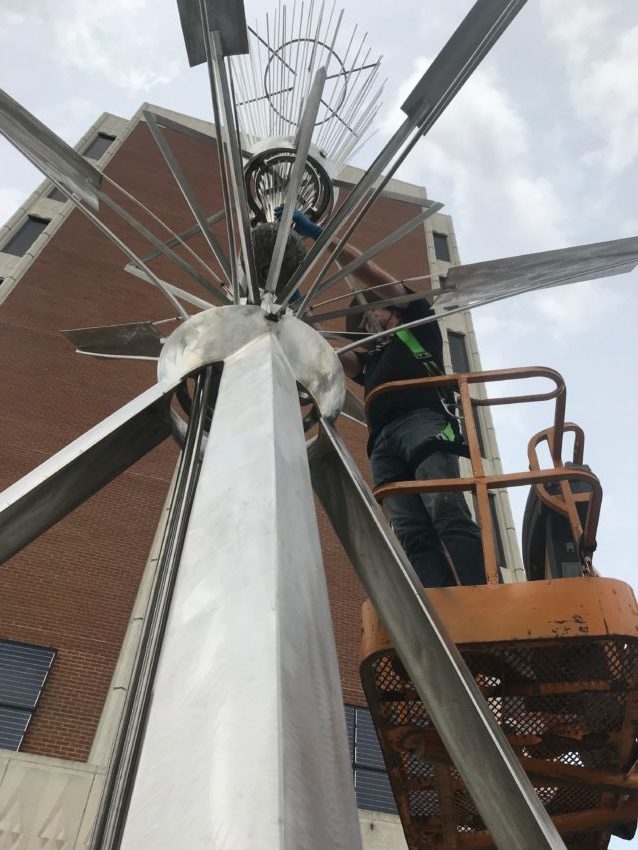
Auriculum by John Clague features four large stainless steel legs which support a central element. It stands 20 feet tall. This central section when moved by the wind causes various metal components to strike one another- spurring a series of chime-like sounds. Two lead balls complete the sculpture: a smaller one in the top central element, and a larger one that acts as pendulum. Inscribed on the lead balls are all the names of the individuals who helped John Clague create the stainless steel and lead artwork.
The conservation of the kinetic metal sculpture in Ohio began with restraining the large lead ball, this helped to control the movement of the sculpture during the conservation treatment. Conservators Gwinner and Simms used a lift to access the top areas of the sculpture, removing debris from the interior recesses.
The next step involved a chemical treatment using a mild acid applied with a conditioning pad on the stainless steel components only. More tenacious corrosion required a stronger acid solution applied with either brush or an abrasive pad. Any solution applied to the surface thoroughly rinsed with water.
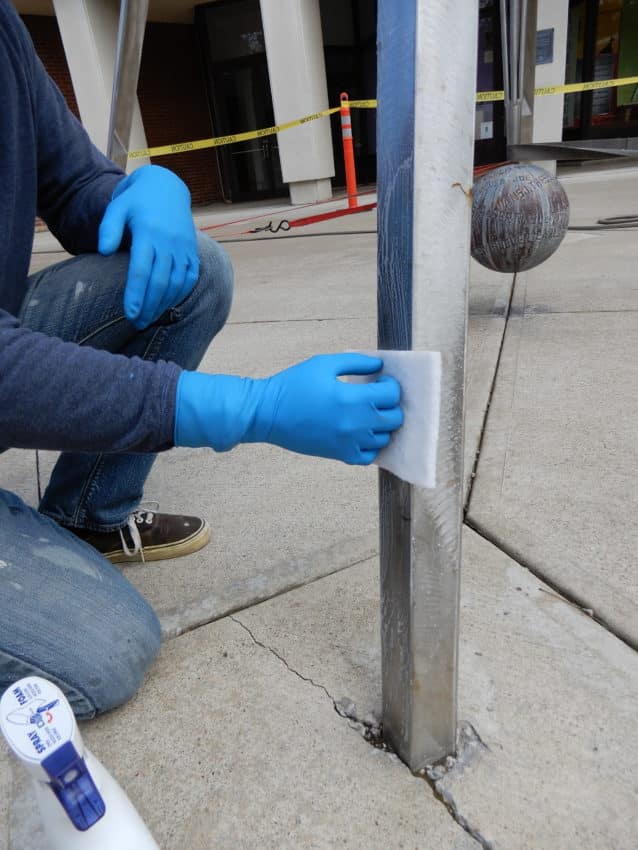
This process was repeated a second time if required, but gradually the corrosion was reduced. Deep, rusting scratches in the metal on the lower supports of legs of the kinetic metal sculpture could not be resolved with a chemical treatment alone.
While stainless steel does corrode, there is likely a different reason for the rusting scratches found on Auriculum. As with many public artworks, the sculpture is also part of the community and culture in which it is installed. In the past, library visitors have locked bikes to the sculpture, possibly causing something commonly referred to as “transfer” corrosion. In this case, when the sculpture is scratched with another metal implement such as a chain or cable, small inclusions of the steel become embedded in the stainless steel surface of the artwork. The inclusions rust more readily than the stainless steel over time with exposure to the elements.
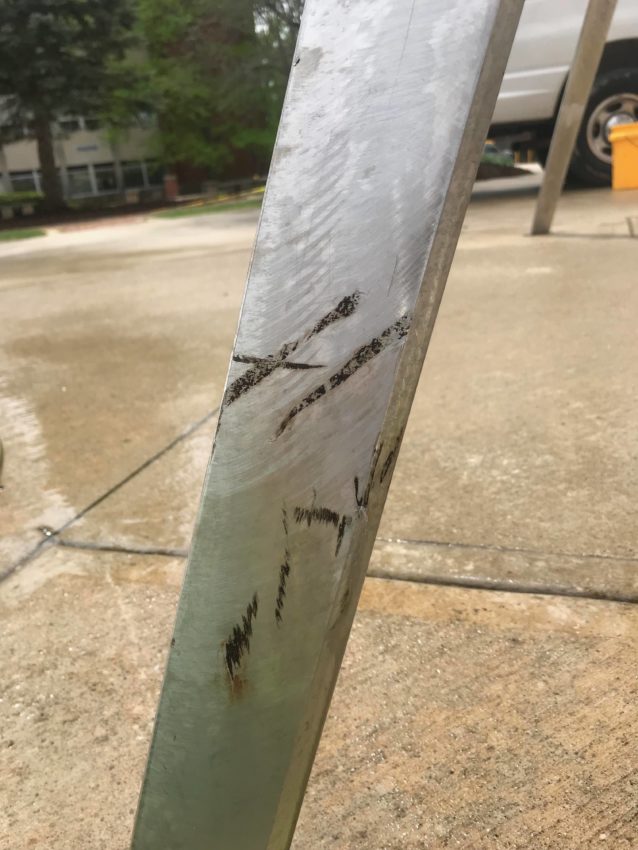
For these areas, Conservator Gwinner resurfaced the stainless steel using the same techniques that would have been used the artist or his fabricators; this blended the damaged areas while greatly reducing or eliminating corrosion on the lower supports.
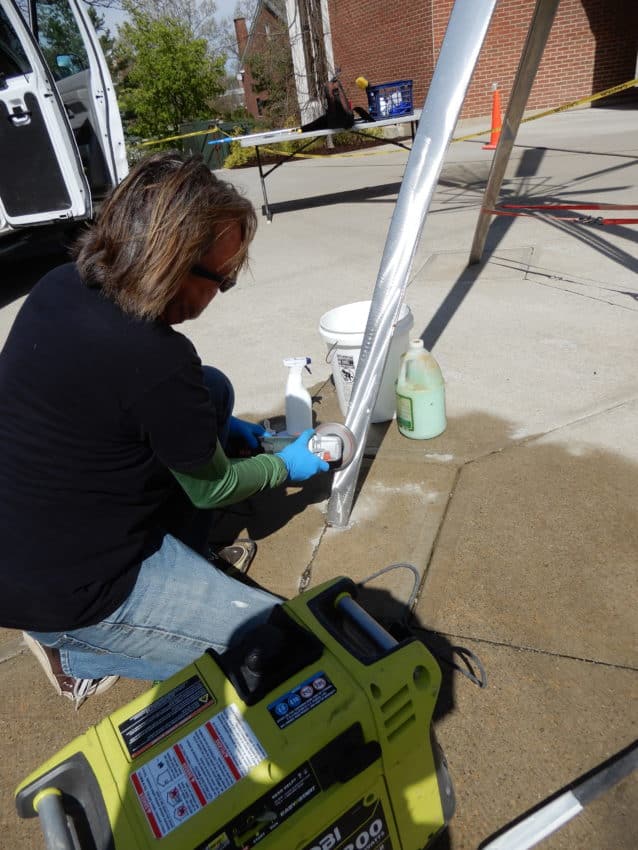
Treatment of the lead sculpture element was more complicated. It has been observed by other conservation and cultural heritage preservation professionals that an unusual corrosion has developed on outdoor lead sculpture in recent times. The lead corrosion is maroon in color, and does not respond well to previously known treatment methods. Since completely resurfacing the lead is either considered invasive or not an option, painting the lead sculpture is one technique, but it has not been observed that the red to purple colored corrosion does actual harm to the metal.
For the latter reason, it was decided by Conservator Gwinner and the client to not treat the corrosion lead components. Some physical damage on the top ball was hammered back into position by Gwinner to recreate the original round shape, completing the conservation treatment of the kinetic metal sculpture in Ohio.
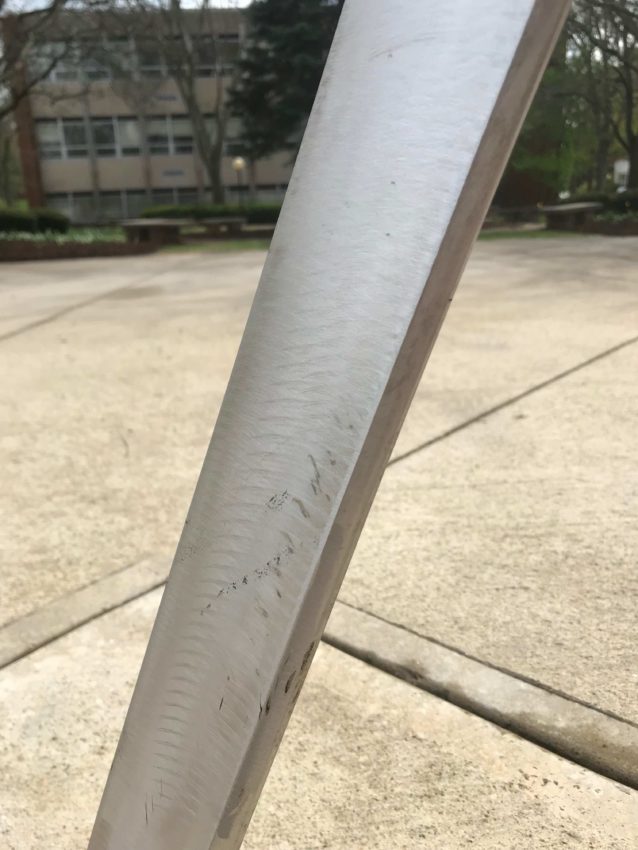
The conservation created a brighter, more reflective surface that resembled the intended metal surface after treatment. In order to keep the stainless steel and lead in good condition, regular maintenance is required. Limiting salt in the winter for deicing and reducing student and visitor interaction is also necessary for the preservation of the kinetic metal sculpture.
Ashland College was founded in 1878, changing its name to Ashland University in 1989. There are currently over 6,000 attending the private college located in Ashland, Ohio. You can explore the campus here.
